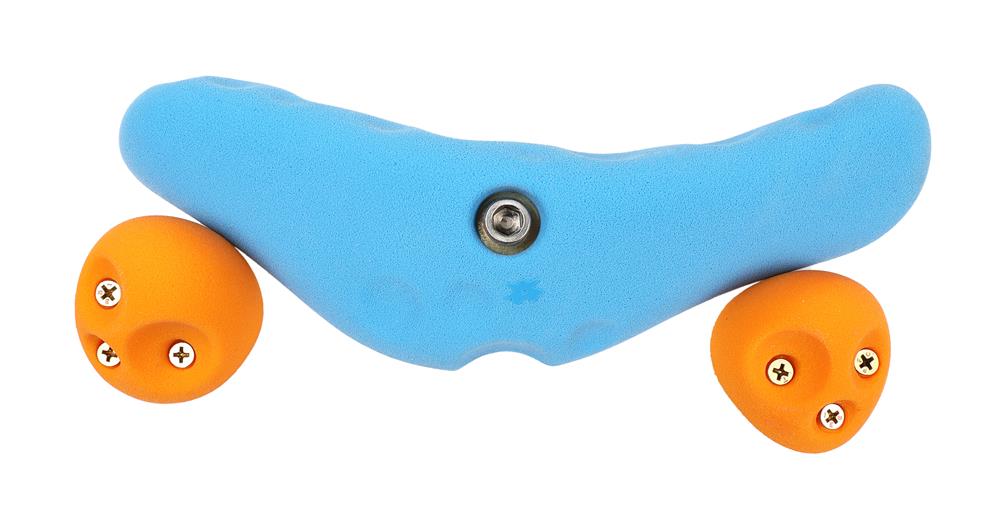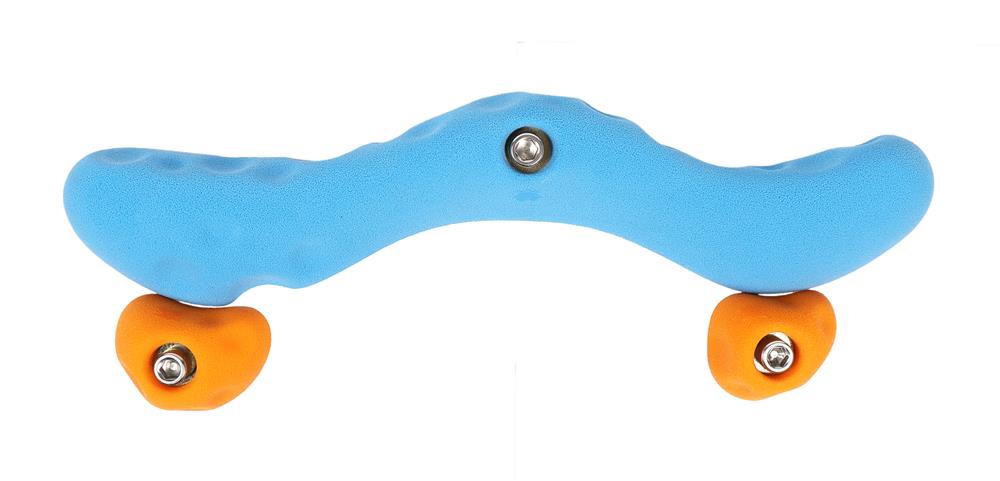How To Tighten a Climbing Hold (and ways to stop holds from spinning)
TIGHTENING TORQUE FOR CLIMBING HOLDS
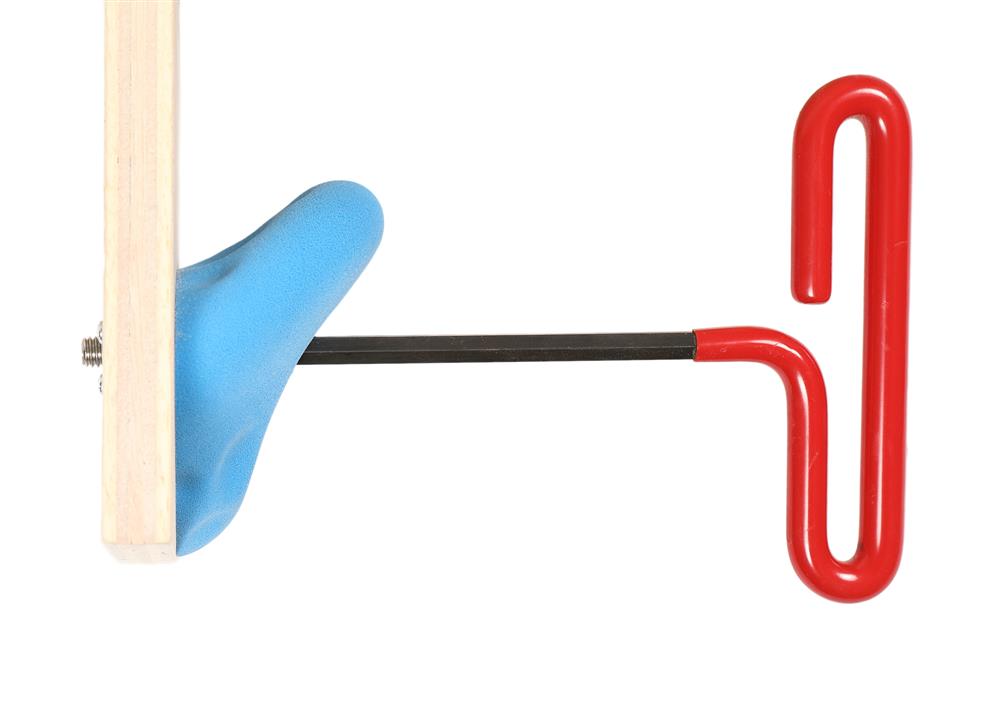
The level of tightening torque for climbing is important for a few reasons:
1. The torque should be big enough for the climbing hold not to rotate around its bolt. If the hold is large enough, even the tightest torque will not stop the climbing hold from spinning; therefore, Spinner Screws or Stopper Holds are used.
Spinner Screws are screw locations molded into the climbing hold. If the climbing hold does not have this location set into it, you should not drill your own.
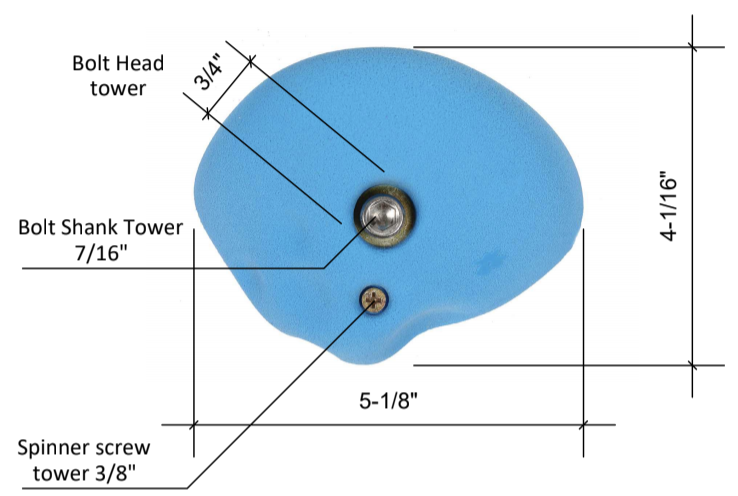
Stopper Holds are usually a Screw-On hold that is attached to the wall touching the main hold. When the grip rotates, which is usually counterclockwise, the main hold stops its rotation when it touches the Stopper Hold.
2. The torques, on the other hand, should not be too big. A climbing hold can break/be stressed in over-tightening and damage the fixing points (t-nuts) in the climbing structure. It is common for route setters with impact drivers to overtighten holds. What this creates is stress on the t-nut and the hold.
Impact Driver vs T-Wrench
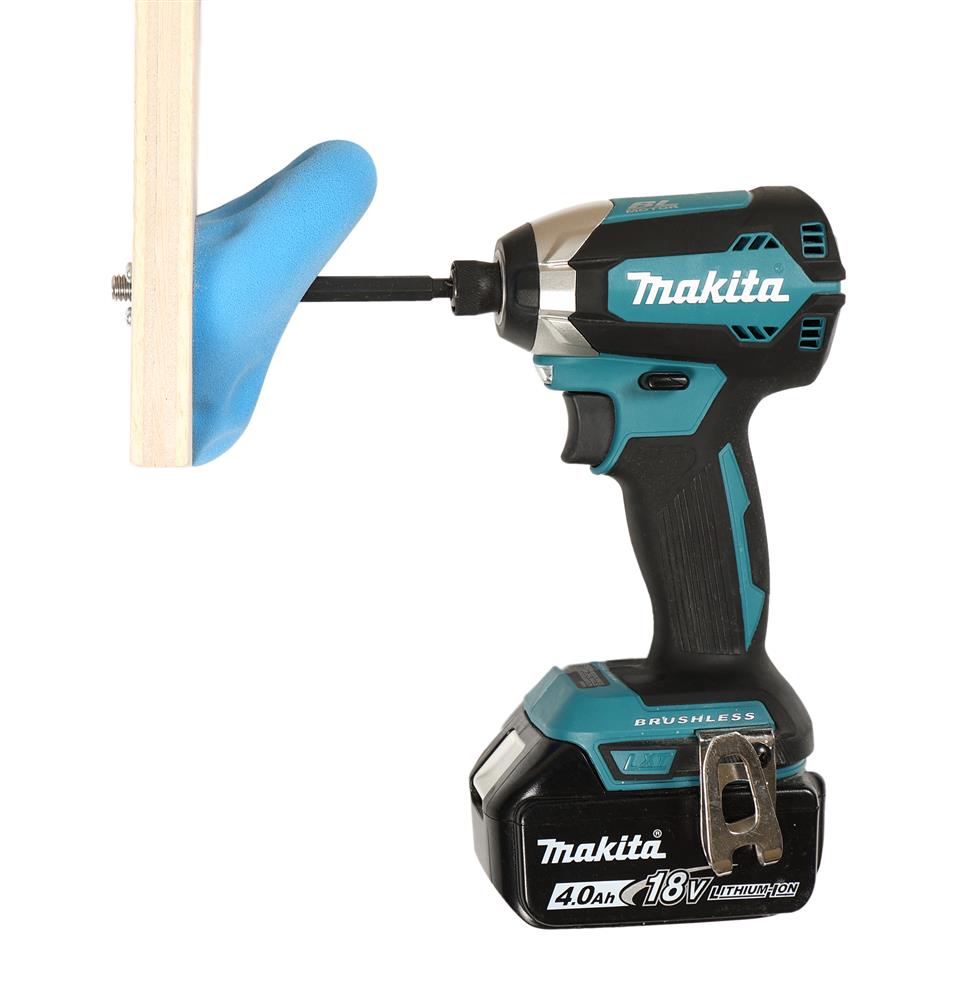

If you've ever heard an impact driver in action, then you've probably noticed this in the form of a really loud, repetitive clicking noise that it makes as it's driving in a screw. That's the noise of the hammering action, and it occurs dozens of times per second, depending on how fast you're driving in the bolt.
The T-wrench requires a little elbow grease when attaching a climbing hold.
The differences are:
1. Impact drivers are fast and powerful. When in the hands of an unskilled user, you can cross-thread the bolt/t-nut combination very quickly.
2. The T-wrench slows the process down a lot, however, with less speed comes more accuracy in allowing the bolt to engage the T-nut threads.
Tightening Torque of Climbing Holds
Torque is measured in Newton-meters (Nm) or you might see the imperial measurement of lb.-ft (pounds-feet).
Depending on the size of the climbing holds, we are recommending the following tightening torque for the bolt-on holds. Once the bolt is snug when using a T-wrench, a 1/4 turn to a 1/2 turn of the wrench will get you close to the below numbers. If the hold is spinning and you do not know what to do, call us at 801-404-0280 for advice.
Small climbing hold (1/2” of material behind the washer): Tighten 25-30 Nm or 18-22 lbs./feet.
Medium climbing hold (3/4” of material behind the washer): Tighten 30–35 Nm or 22-26 lbs./feet.
Large climbing hold (1” of material behind the washer): Tighten 30-40 Nm or 22-29 lbs./feet.
Extra-large climbing hold (>1” of material behind the washer): Tighten 40-50 Nm or 29-37 lbs./feet.
Extra-extra-large climbing hold (>2” of material behind the washer): Tighten 50 Nm or 37 lbs./feet.
Mechanical Properties of 3/8-16 Alloy Steel Socket Cap Bolts
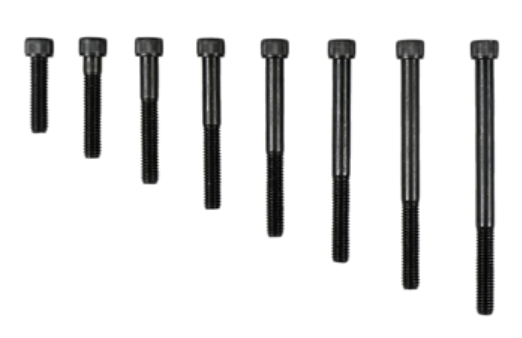
Tensile Strength: 13,950 lbs.
Yield Strength: 12,555 lbs.
Shear: 11,910 lbs.
Tightening Torque: 845 lbs.
Mechanical Properties of 3/8-16 Stainless Steel Socket Cap Bolts
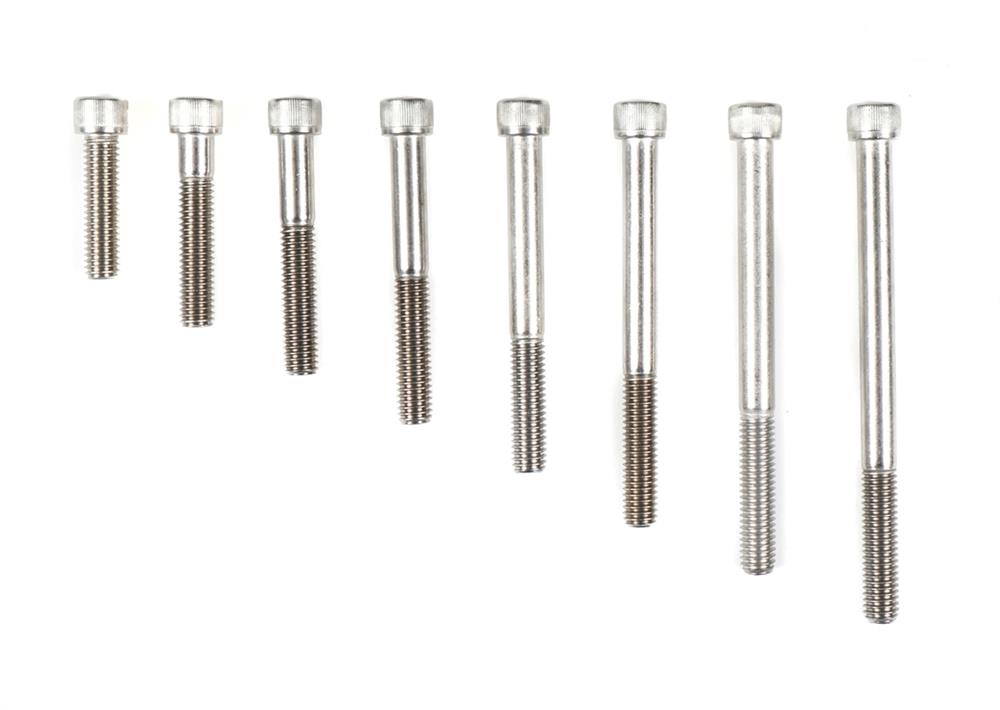
Tensile Strength: 7025 lbs.
Yield Strength: 3510 lbs.
Shear: 4970 lbs.
Tightening Torque: 341 lbs.
